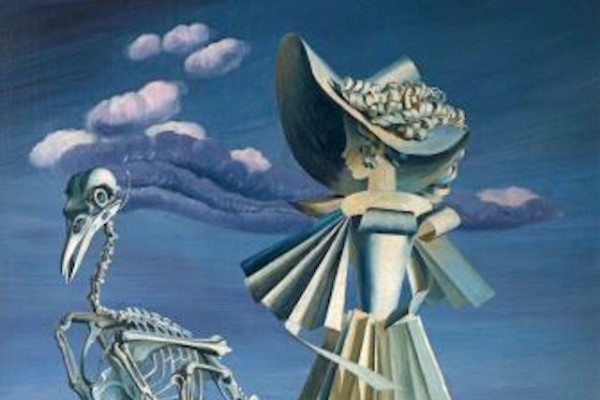Our speaker on this occasion was Isabel Vermote, a historian and art historian. She studied at the universities of Namur, Leuven and Brussels. She currently works for the Education Department of the Royal Museum of Fine Arts of Belgium. She is also a lecturer at the Bozar, ING, Belfius and for some private collections.
She dealt with the following six aspects of Surrealism:
- Focus on contemporary art What is Surrealism?
- The surrealist male gaze
- The role of women in the surrealist movement
- The wives and lovers of Max Ernst
- Recognition of female artists
André Breton was a French writer and poet, the co-founder, leader and principal theorist of Surrealism. His writings include the first Surrealist Manifesto of 1924. He felt that Surrealism was not just a movement but an attitude and a desire to create a more equal society. Many of his innovative ideas were a reaction to the First World War. In his manifesto, he stressed the importance of the subconscious. Sadly, the surrealist movement in France gradually faded away after his death.
This was not the case in Belgium where Magritte and his friend Paul Nougé were the main sources of inspiration behind Surrealism. Promoting these ideas was a collective effort by a group of like-minded artists, rather than the work of just one individual. Many artists, including Giorgio de Chirico, drew inspiration from this group, and his influence extended to Belgian artists such as Delvaux.
Magritte wanted to shock, so he painted everyday objects out of context and gave his paintings strange names. Ceci n’est pas une pipe emerged from this playful approach.
Dali, who joined the Surrealists later on, was a different kind of surrealist painter. His work sometimes incorporates wordplay and personal references. He was greatly inspired by Freud who exclaimed when they finally met, “He is a mad genius”.
Isabel then presented an image to illustrate the concept of “the male gaze,” exemplifying men’s attitudes toward women. She showed photographs of 16 male surrealist artists with their eyes closed around an image of a naked woman in the centre, with the text “je ne vois pas la femme cachée dans la forêt”. All the men had their eyes closed, suggesting that they were imagining the woman and seeing her as a mystery.



